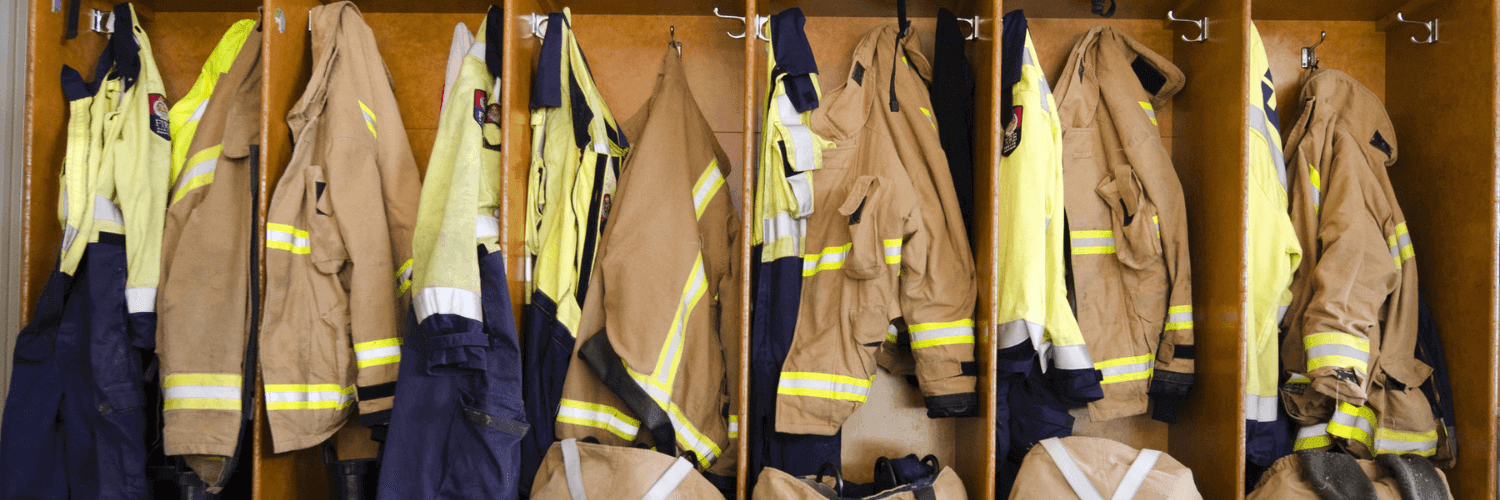Following our earlier guide on wildland fire gear maintenance from April, this post dives deeper into actionable steps to care for your essential equipment. The extreme conditions faced by wildland crews—intense heat, rough terrain, and long hours—demand equipment that performs reliably. Proper maintenance is essential to ensure it remains safe, reliable, and ready for action. By following these best practices, you can not only extend your gear’s lifespan but also ensure your safety and efficiency on the fireline. By following these best practices, you can not only extend your gear’s lifespan but also ensure your safety and efficiency on the fireline.
Cleaning Your Wildland Fire Gear
Wildland fire gear endures harsh environments that leave behind soot, dirt, and chemical residues. Without regular cleaning, these contaminants can weaken materials and reduce the protective capabilities of your gear. Cleaning ensures your equipment remains functional and safe for your next deployment.
Regular cleaning is vital to remove dirt, soot, and chemical residues that can degrade your gear.
- Clothing: Wash flame-resistant clothing in cold water with mild detergent. Avoid fabric softeners and bleach, as they can compromise fire-resistant properties. Air dry your gear in a shaded area to prevent fabric damage from UV exposure.
- Boots: Use a soft brush to remove debris and a leather-safe soap for thorough cleaning. Condition the leather regularly to prevent cracking and maintain flexibility. High-quality boots like White’s Boots and Danner Boots benefit significantly from regular cleaning and conditioning to ensure longevity.
- Helmets and goggles: Wipe down helmets with a damp cloth and mild cleaner. Clean goggles with a soft cloth to avoid scratches, ensuring visibility and protection.
Inspecting for Wear and Tear
Routine inspections are a critical part of maintaining your wildland fire gear. Gear that appears fine at a glance can have hidden weaknesses, such as small tears or worn straps, that compromise its effectiveness. Identifying and addressing these issues early prevents more significant damage and ensures your safety in the field.
Frequent inspections help identify small issues before they become critical.
- Clothing: Look for holes, frayed seams, or worn-out Velcro fastenings.
- Boots: Check for worn soles, separated seams, or cracks in the leather.
- Packs and tools: Inspect straps, buckles, and stitching for signs of damage. Tighten or replace loose components as needed.
Quick field repairs, such as stitching small tears or applying adhesive to damaged soles, can prevent further wear. However, replace gear when safety is compromised.
Proper Storage Practices
How you store your wildland fire gear directly affects its longevity. Storing your equipment in unfavorable conditions, such as damp areas or direct sunlight, can degrade its materials over time. Taking a few simple precautions ensures your gear is ready for action when you need it.
Proper storage preserves the integrity of your gear between uses and seasons.
- Clothing: Store gear in a cool, dry area. Avoid compressing it, as folds can weaken the fabric. Use breathable garment bags for long-term storage. For example, Workrite FR clothing requires proper storage to maintain its fire-resistant properties.
- Boots: Store boots upright with boot trees or stuffed with paper to maintain their shape. Keep them in a ventilated area away from direct sunlight.
- Tools and packs: Organize and clean tools before storing. Protect metal tools from rust by applying a thin coat of oil. Durable packs, such as those from Mystery Ranch, should be cleaned and stored properly to maintain their reliability on the fireline.
Routine Maintenance Tips
Maintaining wildland fire gear goes beyond cleaning and storage; it involves regular upkeep to address minor wear and tear before it becomes a problem. A consistent maintenance routine helps prevent unexpected failures and ensures your equipment performs at its best during critical moments.
Routine maintenance ensures your gear is always in optimal condition.
- Regularly condition leather boots and check for loose screws or bolts on tools.
- Replace worn or damaged straps, buckles, and zippers before they fail.
- Create a maintenance log to track repairs and replacements, helping you stay on top of your gear’s condition.
Check out another related article on boots: How to Take Care of Wildland Boots.
Using Gear as Intended
Misusing gear can lead to premature wear or damage. Avoid overloading packs, using tools for unintended purposes, or exposing equipment to conditions beyond its design limits. Always follow manufacturer guidelines for use and care to ensure optimal performance.
Conclusion
Maintaining your wildland fire gear is about more than extending its lifespan; it’s about ensuring your safety on the fireline. Regular cleaning, inspections, and proper storage can save you time and money while keeping your equipment reliable. By following these steps, your gear will be ready to perform when you need it most.

